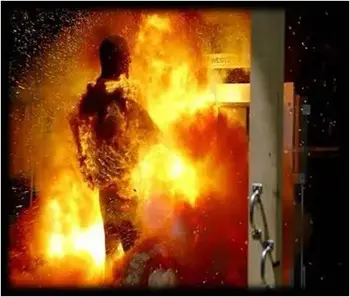What causes electrical arcing?
By R.W. Hurst, Editor

CSA Z462 Arc Flash Training - Electrical Safety Essentials
Our customized live online or in‑person group training can be delivered to your staff at your location.

- Live Online
- 6 hours Instructor-led
- Group Training Available
Download Our OSHA 3075 Fact Sheet – Understanding Electrical Hazards in the Workplace

- Learn the effects of electric current on the human body
- Understand OSHA safety standards and protective devices
- Discover essential lockout/tagout and grounding practices
What causes electrical arcing? High voltage stress, insulation breakdown, ionized air gaps, loose connections, contaminated conductors, overvoltage transients, and inadequate clearance create plasma paths, leading to arc flash and dielectric failure in switchgear and wiring.
What Causes Electrical Arcing?
Arcing occurs when voltage stress ionizes gaps from insulation breakdown, loose connections, moisture, or contamination.
✅ Insulation breakdown and ionization under overvoltage stress
✅ Loose or worn contacts causing high-resistance heating and sparks
✅ Contaminants, moisture, or poor clearance reducing dielectric strength
What causes electrical arcing?
Electrical arcing occurs when electricity flows through the air between conductors or a grounded object due to an electrical breakdown of gases. Unlike a momentary electric spark, arcing is a continuous discharge. When the normal path of electrical current is disrupted, the current travels between two points, causing the surrounding air to become ionized. This process produces intense light and heat, known as an arc flash, which can cause severe injuries and significant property damage. For a foundational overview of the phenomenon, consult this electrical arcing primer to understand how ionization and breakdown processes initiate sustained discharge.
Common Causes of Electrical Arcing
Several factors can lead to electrical arcing, including:
- Accidental Contact: Touching energized equipment unintentionally.
- Insulation Failures: Breaks or gaps in the insulation material.
- Exposed and Frayed Wires: Damage to wires that exposes the conductive material.
- Equipment Malfunction: Failures in electrical devices or systems.
- Wear and Tear: Deterioration of conductors over time.
- Overloaded Outlets: Plug outlets carrying more current than they are designed for.
- Contaminants: Corrosion and dust affecting electrical connections.
- Poor Maintenance: Neglecting regular upkeep of electrical systems and equipment.
If you are examining root causes in more depth, this explainer on why arc flashes happen connects equipment conditions with human factors and environmental contributors.
Electrical arcing releases a tremendous amount of energy, leading to potential fires, severe burns, eye and ear damage, toxic gas emissions, and even explosion-like shockwaves. Detailed case summaries in this arc-flash safety resource illustrate typical injury patterns and mitigation outcomes.
Test Your Knowledge About Arc Flash!
Think you know Arc Flash? Take our quick, interactive quiz and test your knowledge in minutes.
- Instantly see your results and score
- Identify strengths and areas for improvement
- Challenge yourself on real-world electrical topics
Preventing Electrical Arcing
Implementing preventive measures can significantly reduce the risk of electrical arcing. Key strategies include:
1. Over-Current Protection Devices
Ensuring that over-current protection devices are correctly installed is critical. The National Electrical Code (NEC) has required the inclusion of arc fault circuit interrupters (AFCIs) in new constructions since 2002. AFCIs detect stray currents and automatically shut down the circuit, preventing potential arcing incidents. For step-by-step scenarios, this guide on how an arc flash occurs clarifies detection thresholds, fault progression, and device coordination.
2. De-Energizing Equipment
Most injuries from electrical arcing occur while equipment is energized. De-energizing equipment before performing maintenance or operations can minimize the risk of stray currents causing arcing. This practice is essential for protecting workers and ensuring a safe working environment. To identify tasks most at risk, review when arc flashes are likely to occur so lockout/tagout planning addresses realistic exposure points.
3. Conducting Electrical Hazard Analyses
Before working on or near electrical conductors, an Electrical Hazard Analysis is required by the NEC. This analysis determines if conductors could be energized and identifies the necessary precautions to protect workers. The analysis helps in planning safe work practices and using appropriate protective equipment. As you develop the job safety plan, this overview of how arc flash happens helps translate analysis findings into practical boundaries and PPE choices.
Electrical arcing is a dangerous phenomenon that can cause severe injuries and damage. By understanding its causes and implementing effective preventive measures, such as installing over-current protection devices, de-energizing equipment, and conducting thorough hazard analyses, workplaces can enhance safety and protect employees from the risks associated with electrical arcing. Regular maintenance and adherence to safety protocols are essential components of preventing arc flash incidents and ensuring a safe working environment. For a concise definition and key concepts, see what an arc flash is to reinforce training materials and hazard communication.
Related Resources








